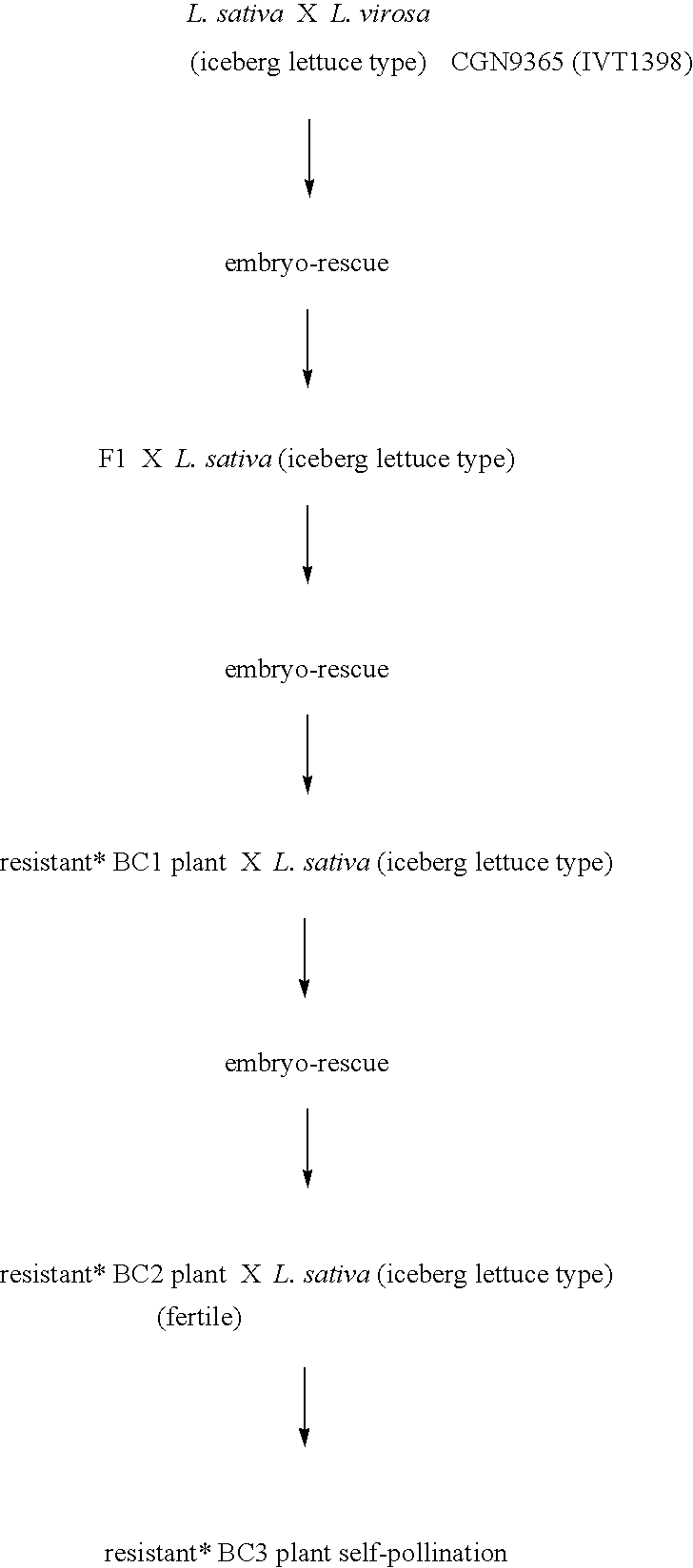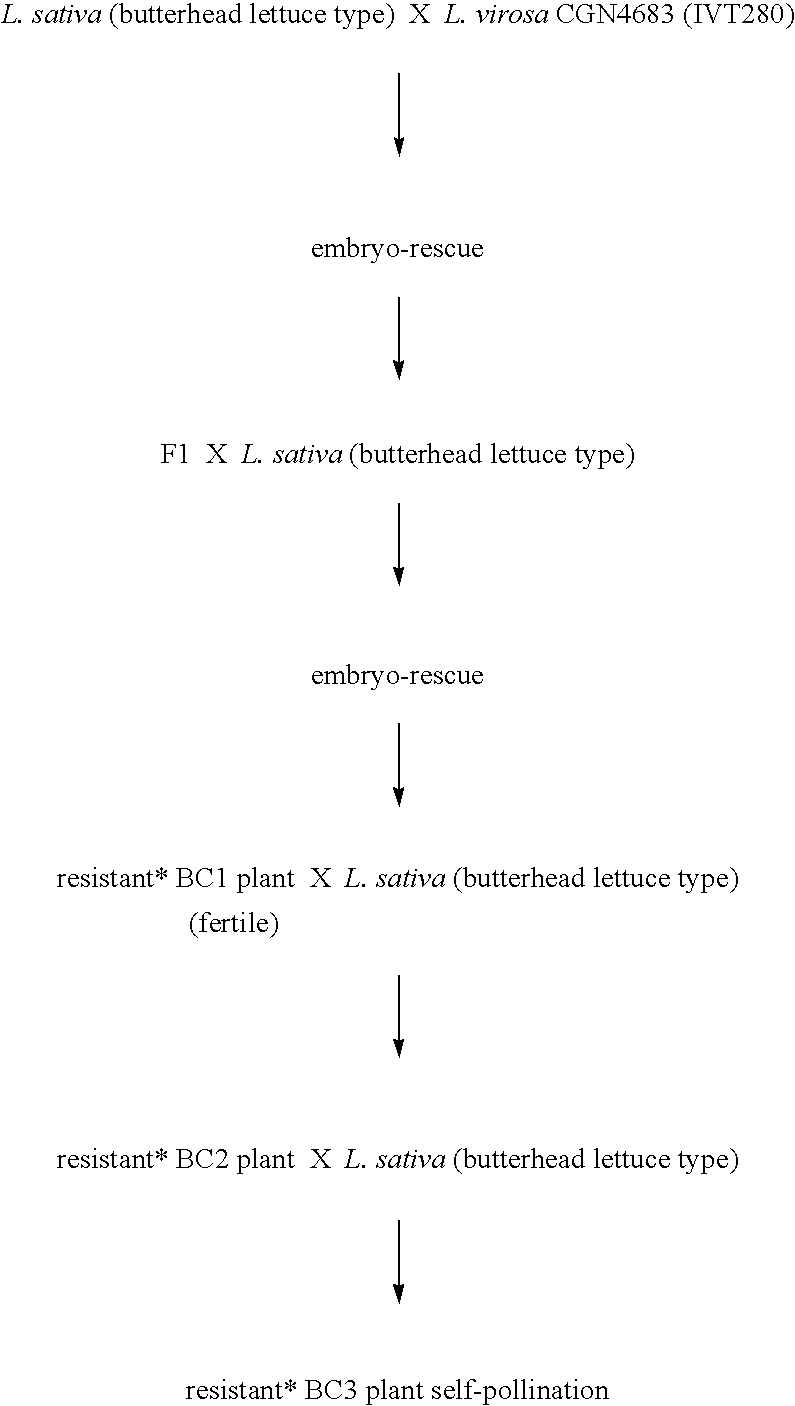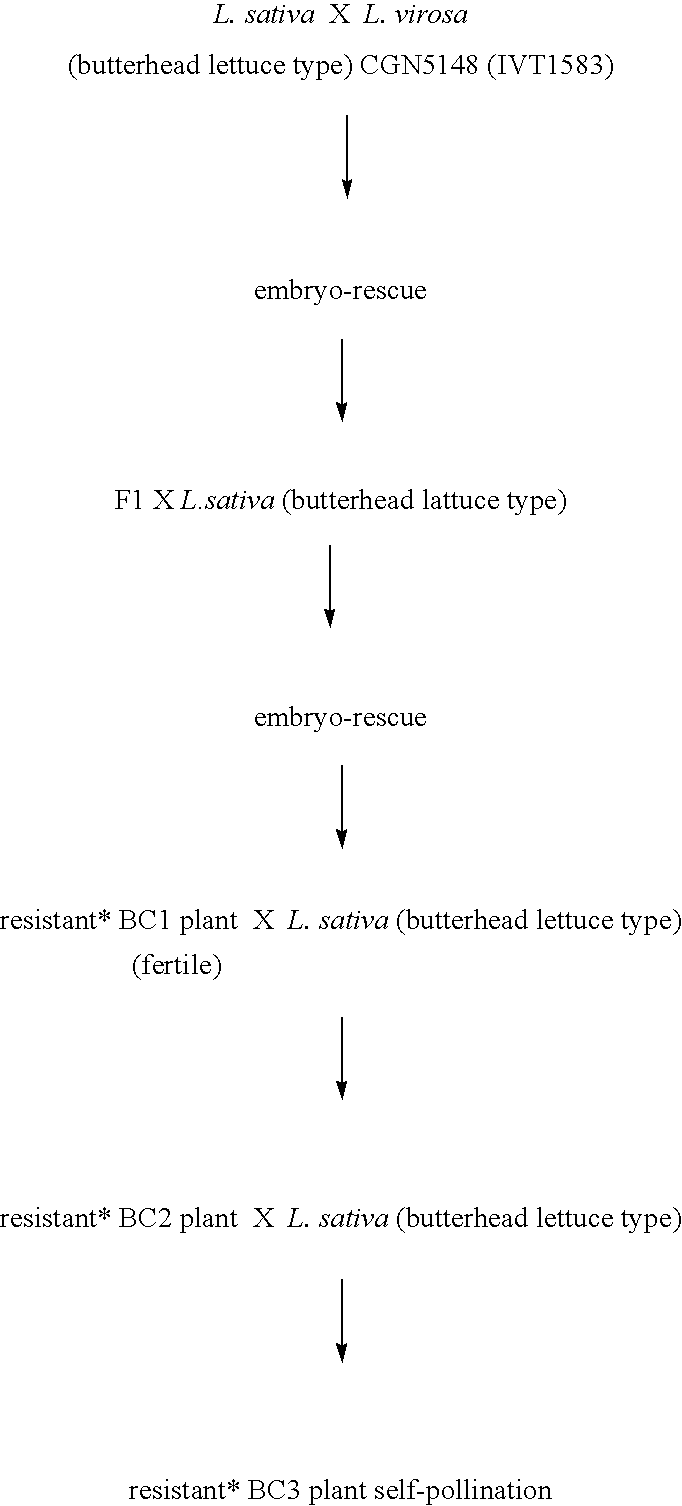Lettuce plants having broad-spectrum Dm-resistance genes
a technology of resistance genes and broad-spectrum, applied in the field of lettuce plants having broad-spectrum dm resistance genes, can solve the problem of not being able to demonstrate the presence of two or more qualitative resistance genes, and achieve the effect of lasting resistan
- Summary
- Abstract
- Description
- Claims
- Application Information
AI Technical Summary
Benefits of technology
Problems solved by technology
Method used
Image
Examples
example 1
Marker Aanalysis in Lettuce F2 Populations which Split for a Bremia lactucae Regel Resistance Gene
[0051]The techniques used to provide fast and directed molecular DNA-markars closely associated with resistance genes to B.lactucae are per se known (Paran et al., Genome 34, 1021-1027, 1991; Paran et al., TAG85, 985-993, 1993; Williams et al., Nucleic Acids Research, 18, 6531-6535, 1990), and can be used in analogous manner for identification of DNA-markers in other crops.
[0052]From a population (see crossing scheme, example 2) of more than 300 plants which segregate for B.lactucae resistance the individuals susceptible and resistant to the same B.lactucae phenotype were pooled separately (5 plants per pool). These pools were examined using 1600 commercially obtained RAPD-primers (Operon Technologies, Alameda USA, OPA-01 to OPAN-20; and University or British Columbia UBC 1 to 800). The PCR mixture for the DNA-markers A, B, C1, C2, C3, C4, D1 and D2 was amplified under standard RAPD con...
example 2
Crossing Schemes
[0055]In this example the crossing schemes for four different populations are shown. The following symbols / characters are used herein:[0056]*=resistant plant, which means: resistance to all tested B.lactucae physios.[0057]BC=“Back Crossing”[0058]Z=Self-pollinating, the number of figures after Z indicates how many times self-pollination took place.
Population A, L.virosa CGN9365, (IVT1398) (marker A)
[0059]The BC3Z population was then tested and marker A identified. Individual BC3Z plants were self-pollinated and from the BC3Z2 populations the individual BC3Z2 plants homozygous for gene A were selected. The selected plant was used for linking analysis of the diverse identified DNA-markers (Example 3).
Population B, L.virosa CGN4683, (IVT280) (Marker B)
[0060]The BC3Z population was tested and marker B identified. Individual BC3Z plants were self-pollinated and from the obtained BC3Z2 populations the individual BC3Z2 plants homozygous for gene B were selected and used fo...
example 3
Linking Analysis of the Identified DNA-markers
[0063]There are different methods of demonstrating whether diverse qualitative resistance genes can be positioned in the same or in different linking groups (chromosomes).
A. Genetic Map
[0064]Determining of the position of DNA-markers can be carried out by generating a genetic map of the 9 chromosomes of lettuce. In order to generate a genetic map on which the position of the diverse molecular DNA-markers is indicated, crossings are made between lettuce plants which are highly polymorphic relative each other from a genetic viewpoint. For this type of crossing with a high degree of polymorphism a distinction can be made between:[0065]intraspecific crossing:
This is a crossing between for instance butterhead lettuce and iceberg lettuce, a crossing is made within a species (L.sativa),[0066]interspecific crossing:
This is a crossing between two Lactuca species, for instance butterhead lettuce (L.sativa) with L.virosa.
[0067]An F2 or BC1 populat...
PUM
| Property | Measurement | Unit |
|---|---|---|
| resistance | aaaaa | aaaaa |
| Dm-resistance | aaaaa | aaaaa |
| diameter | aaaaa | aaaaa |
Abstract
Description
Claims
Application Information
 Login to View More
Login to View More - R&D
- Intellectual Property
- Life Sciences
- Materials
- Tech Scout
- Unparalleled Data Quality
- Higher Quality Content
- 60% Fewer Hallucinations
Browse by: Latest US Patents, China's latest patents, Technical Efficacy Thesaurus, Application Domain, Technology Topic, Popular Technical Reports.
© 2025 PatSnap. All rights reserved.Legal|Privacy policy|Modern Slavery Act Transparency Statement|Sitemap|About US| Contact US: help@patsnap.com



